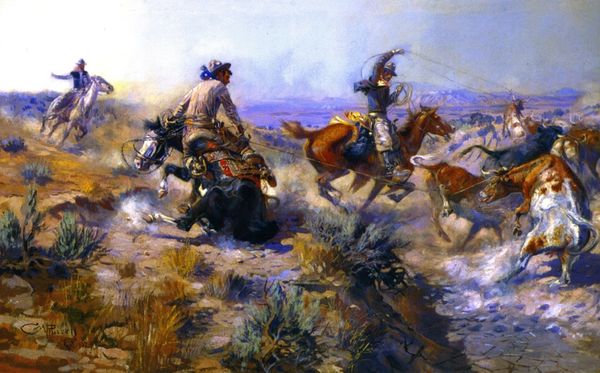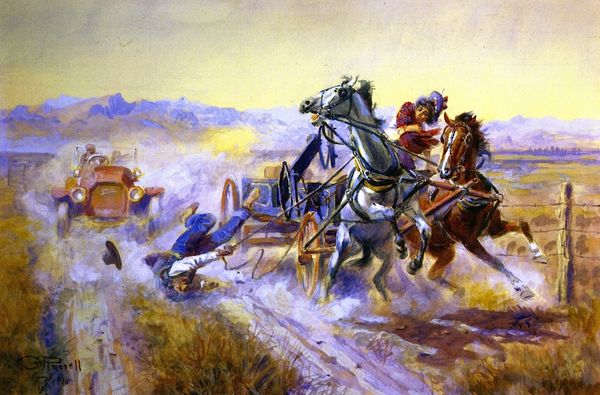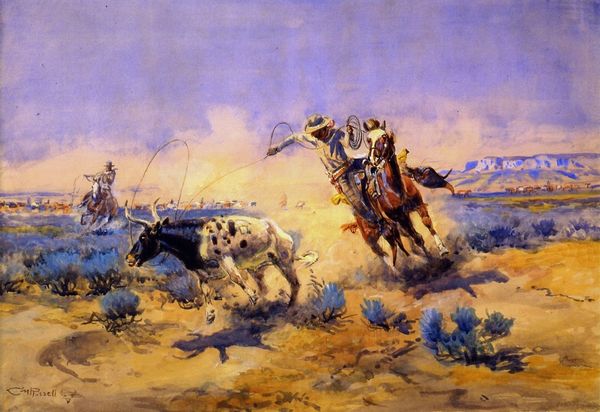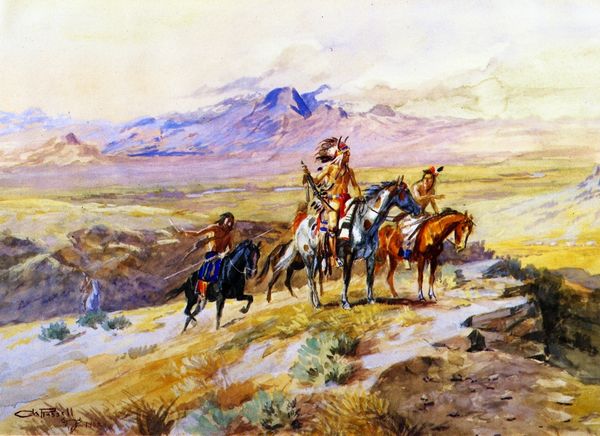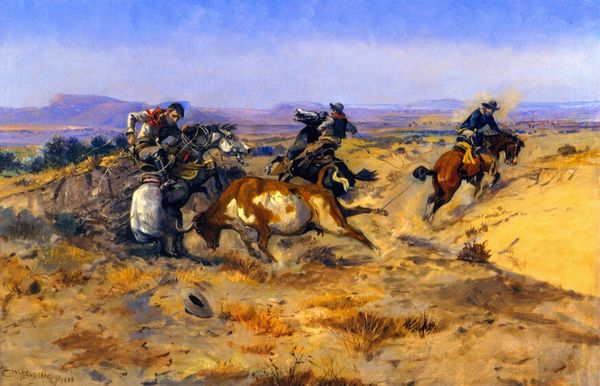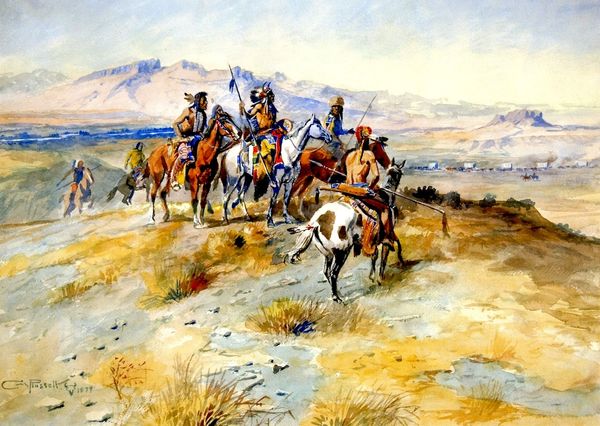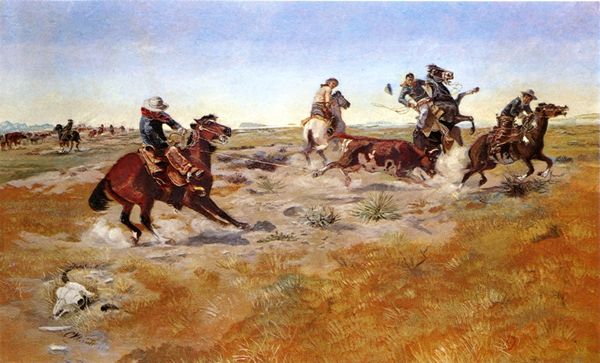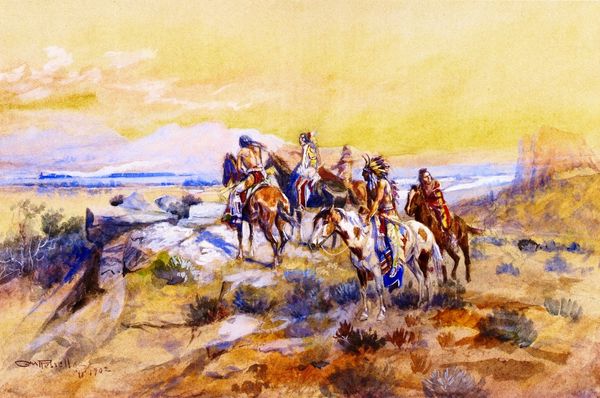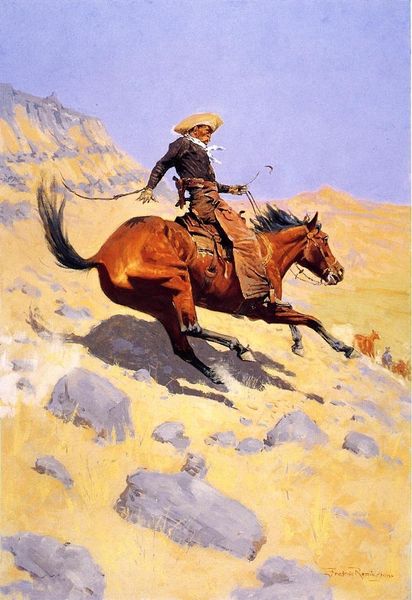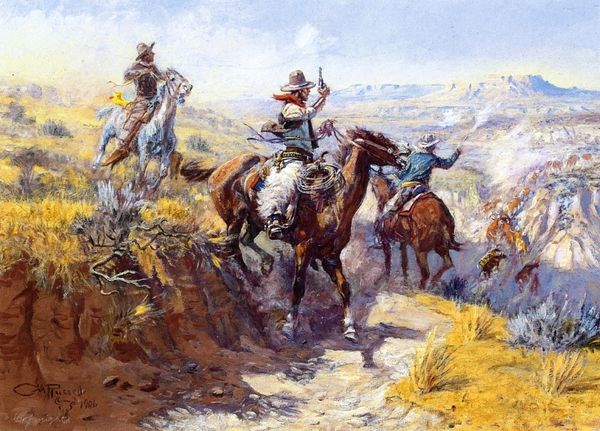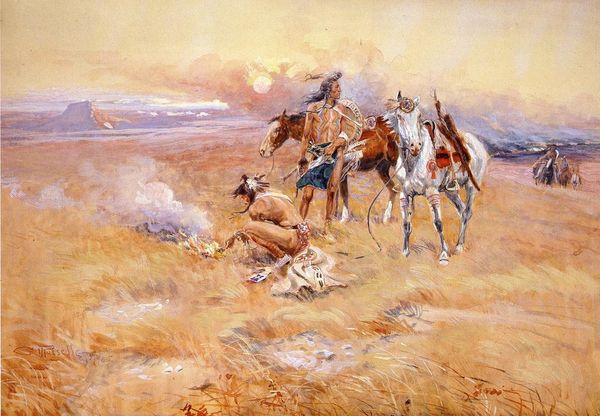
Copyright: Public domain
Charles Russell made this watercolor, Life Saver, in 1910, and the first thing I notice is how he lets the white of the paper shine through. He doesn't try to cover everything up, and that gives the painting a real sense of light and movement. Look at the horses, for instance: see how the paint is thin and transparent, almost like a stain? You can see the brushstrokes, the way he flicks the paint to suggest the texture of their coats and the dust kicking up around them. It's a really physical process. It's like he's not just painting a picture, but also capturing a moment in time. The man is pulling hard on the reins, you can see the tension, and there's a kind of dark humour in how he uses the horse and buggy as an obstacle to the new car. Russell's paintings, like those of Winslow Homer, are a reminder that art is an ongoing conversation about how we see and experience the world. There's always room for interpretation, and that's what makes it so exciting.
Comments
No comments
Be the first to comment and join the conversation on the ultimate creative platform.
